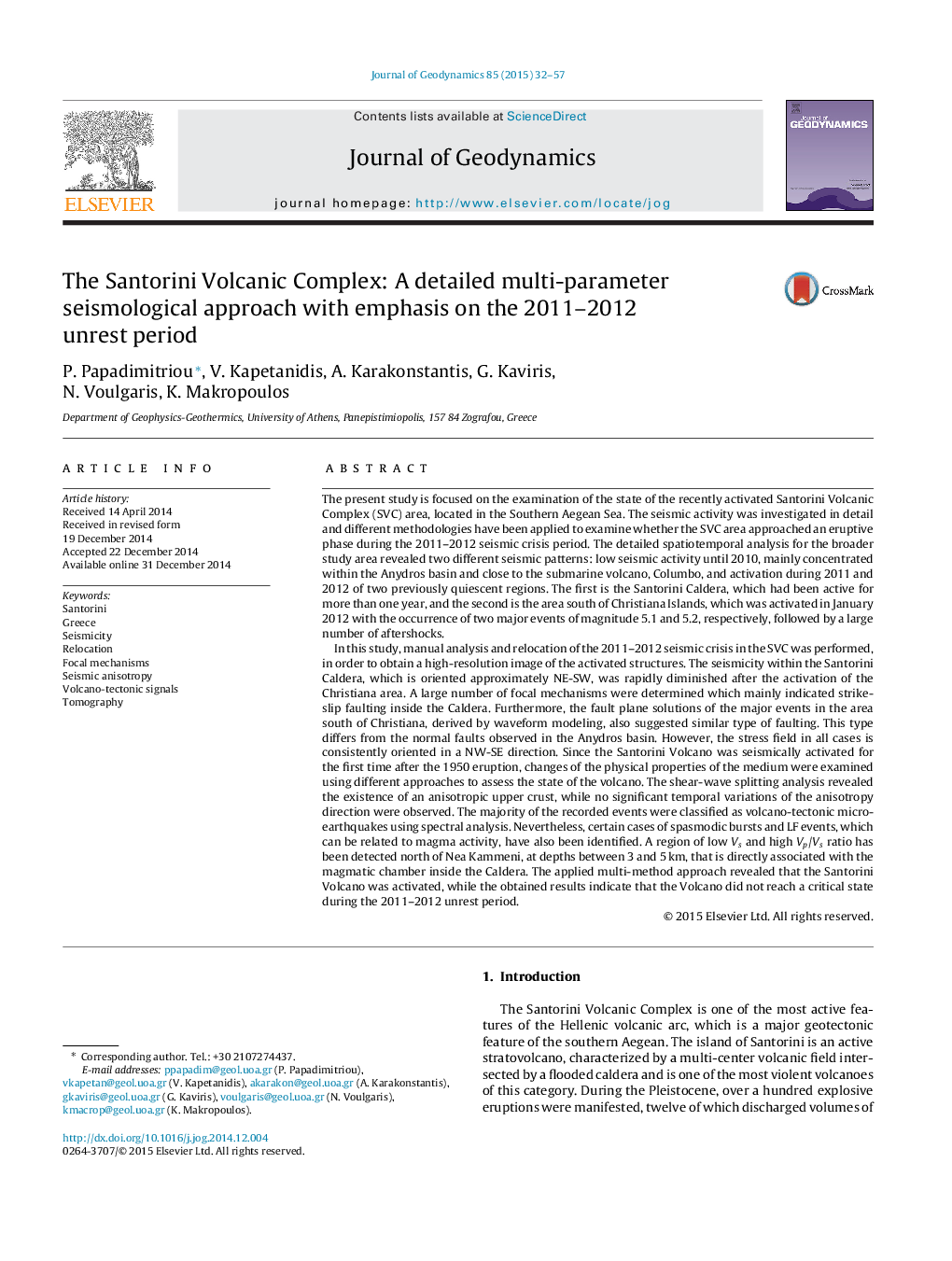| کد مقاله | کد نشریه | سال انتشار | مقاله انگلیسی | نسخه تمام متن |
|---|---|---|---|---|
| 4688081 | 1635764 | 2015 | 26 صفحه PDF | دانلود رایگان |
• Seismotectonic analysis revealed strike-slip faulting inside the caldera.
• The observed spatial distribution was tangential to the magmatic chamber.
• Several multiplets were distinguished using high-resolution relocation analysis.
• A magmatic chamber has been identified using seismic wave tomography.
• Polarization analysis and anisotropy study indicated activation of the SVC.
The present study is focused on the examination of the state of the recently activated Santorini Volcanic Complex (SVC) area, located in the Southern Aegean Sea. The seismic activity was investigated in detail and different methodologies have been applied to examine whether the SVC area approached an eruptive phase during the 2011–2012 seismic crisis period. The detailed spatiotemporal analysis for the broader study area revealed two different seismic patterns: low seismic activity until 2010, mainly concentrated within the Anydros basin and close to the submarine volcano, Columbo, and activation during 2011 and 2012 of two previously quiescent regions. The first is the Santorini Caldera, which had been active for more than one year, and the second is the area south of Christiana Islands, which was activated in January 2012 with the occurrence of two major events of magnitude 5.1 and 5.2, respectively, followed by a large number of aftershocks.In this study, manual analysis and relocation of the 2011–2012 seismic crisis in the SVC was performed, in order to obtain a high-resolution image of the activated structures. The seismicity within the Santorini Caldera, which is oriented approximately NE-SW, was rapidly diminished after the activation of the Christiana area. A large number of focal mechanisms were determined which mainly indicated strike-slip faulting inside the Caldera. Furthermore, the fault plane solutions of the major events in the area south of Christiana, derived by waveform modeling, also suggested similar type of faulting. This type differs from the normal faults observed in the Anydros basin. However, the stress field in all cases is consistently oriented in a NW-SE direction. Since the Santorini Volcano was seismically activated for the first time after the 1950 eruption, changes of the physical properties of the medium were examined using different approaches to assess the state of the volcano. The shear-wave splitting analysis revealed the existence of an anisotropic upper crust, while no significant temporal variations of the anisotropy direction were observed. The majority of the recorded events were classified as volcano-tectonic micro-earthquakes using spectral analysis. Nevertheless, certain cases of spasmodic bursts and LF events, which can be related to magma activity, have also been identified. A region of low Vs and high Vp/Vs ratio has been detected north of Nea Kammeni, at depths between 3 and 5 km, that is directly associated with the magmatic chamber inside the Caldera. The applied multi-method approach revealed that the Santorini Volcano was activated, while the obtained results indicate that the Volcano did not reach a critical state during the 2011–2012 unrest period.
Journal: Journal of Geodynamics - Volume 85, April 2015, Pages 32–57
